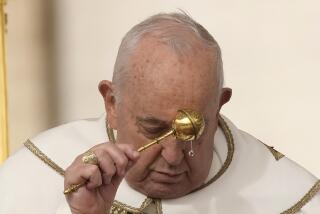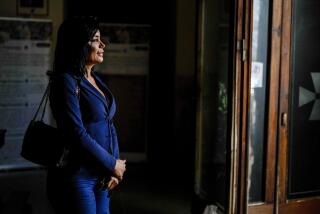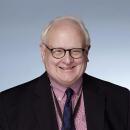Mass confusion, or the rite stuff?
- Share via
On Easter, I attended Mass at Sacred Heart parish in Pittsburgh, Pa., the church where I was baptized and confirmed and where I executed the exquisite choreography required of altar boys in the early 1960s. But, as Thomas Wolfe might have put it, you can’t go to your home church again. The Easter liturgy (a less sectarian term than “Mass” and the way my 16-year-old Catholic-school nephew refers to the rite) was in English, not the Latin I had to memorize as a child. The priest faced the congregation, and women played a prominent role.
My nephew, who was baptized in the Lutheran church, remarked to me after Mass that the rite was “exactly the same” as the one in his former denomination. He wasn’t completely correct; as a liturgy wonk, I could have cited some trifling differences, but as a general matter, Sunday worship in an American Catholic church is strikingly similar to one in an Episcopal or Lutheran parish.
I tried to explain to my nephew what a change this represented from my childhood, when children in our neighborhood were divided into “Catholics” and “publics” (as in public school), and a visit to the Episcopal church across the street from Sacred Heart would have been as unthinkable as darkening the door of a pagan temple.
My nephew seemed as uninterested in this ancient history as in another change I called to his attention: the fact that the pews in Sacred Heart had been stripped of the metal clasps for men’s hats in which my and his mother’s fingers had been caught so many times when we fiddled with them as children.
“Men don’t wear hats anymore,” he replied dismissively. And the Latin Mass those fedora-doffing Catholic men “heard” is also a thing of the past.
Or is it? Pope Benedict XVI, as long rumored, has issued a directive allowing priests to celebrate the so-called Tridentine Latin Mass (named for the 16th century Council of Trent) without the permission of the local bishop. The pope’s edict can be interpreted in several ways, some more reassuring to liberal Catholics than others.
The worst-case scenario is that the pope is reaching out to traditionalist followers of the late “rebel archbishop” Marcel Lefebvre, whose followers have problems with post-Vatican II Catholicism that extend well beyond the language in which the Mass is recited. This “playing to the base” theory might also explain the pope’s recent reiteration that, as the nuns used to tell us, there is only one true Church.
I prefer, perhaps naively, two other explanations for the comeback of the Latin Mass: that the pope is acting out his own youthful infatuation with that rite, and that he sees wider use of the old Mass as an antidote to the banality and bad taste of much post-Vatican II Catholic worship.
Even popes can feel nostalgia for their formative experiences. In a 1997 memoir, then-Cardinal Joseph Ratzinger recalled how “it was a riveting adventure to move by degrees into the mysterious world of the liturgy which was being enacted before us and for us at the altar.” I believe him; I had the same reaction as an altar boy to the sumptuous liturgy at Sacred Heart.
And let’s face it: By letting a thousand liturgical flowers bloom, the liberalization of the liturgy has allowed some pretty homely weeds to creep into what ought to be at least partly an otherworldly experience. I doubt that any real-life groovy priest ever actually consecrated the Eucharist by proclaiming, “Pizza and beer: Jesus is here,” but I’ve attended my share of folk Masses with treacly lyrics and priests who insisted on improvising.
But even if wider use of the old Mass is intended to cure such ills, it could come at a cost, at least in this country. Catholics my nephew’s age don’t remember when many non-Catholic Americans, even after the election of John F. Kennedy, regarded Catholicism as a mysterious cult partly because Catholic priests prayed in a “foreign language.” Whatever its excesses, the English-language liturgy has contributed to interfaith amity. If the Latin Mass were still the norm, for example, would the Lutheran family of the late Chief Justice William Rehnquist have felt comfortable with holding his funeral at the Roman Catholic cathedral in Washington, as they did in 2005? I wonder.
The pertinent question is whether reviving the old Latin Mass is the only way to return mystery to worship. And the answer, I think, is no. I recently attended Sunday Mass at a church in Hollywood at which the liturgy was remarkably like the 11 a.m. Solemn High Mass at Sacred Heart circa 1962, complete with “smells and bells,” the sprinkling of holy water and priestly vestments of a French cut. The Mass also had something I don’t remember from the old Sacred Heart: an erudite and affecting sermon.
But the Mass, which took me to the same “mysterious world” the pope recalls from his Bavarian childhood, was in English. It was also, ironically, in an Episcopal church. Long before Vatican II, “high church” Anglicans demonstrated that the alternative to the Latin Mass was not “pizza and beer: Jesus is here,” but a reverent enactment of the sacred mysteries in a language the people understand and speak.
Michael McGough is The Times’ senior editorial writer. Send us your thoughts at [email protected].
More to Read
A cure for the common opinion
Get thought-provoking perspectives with our weekly newsletter.
You may occasionally receive promotional content from the Los Angeles Times.











